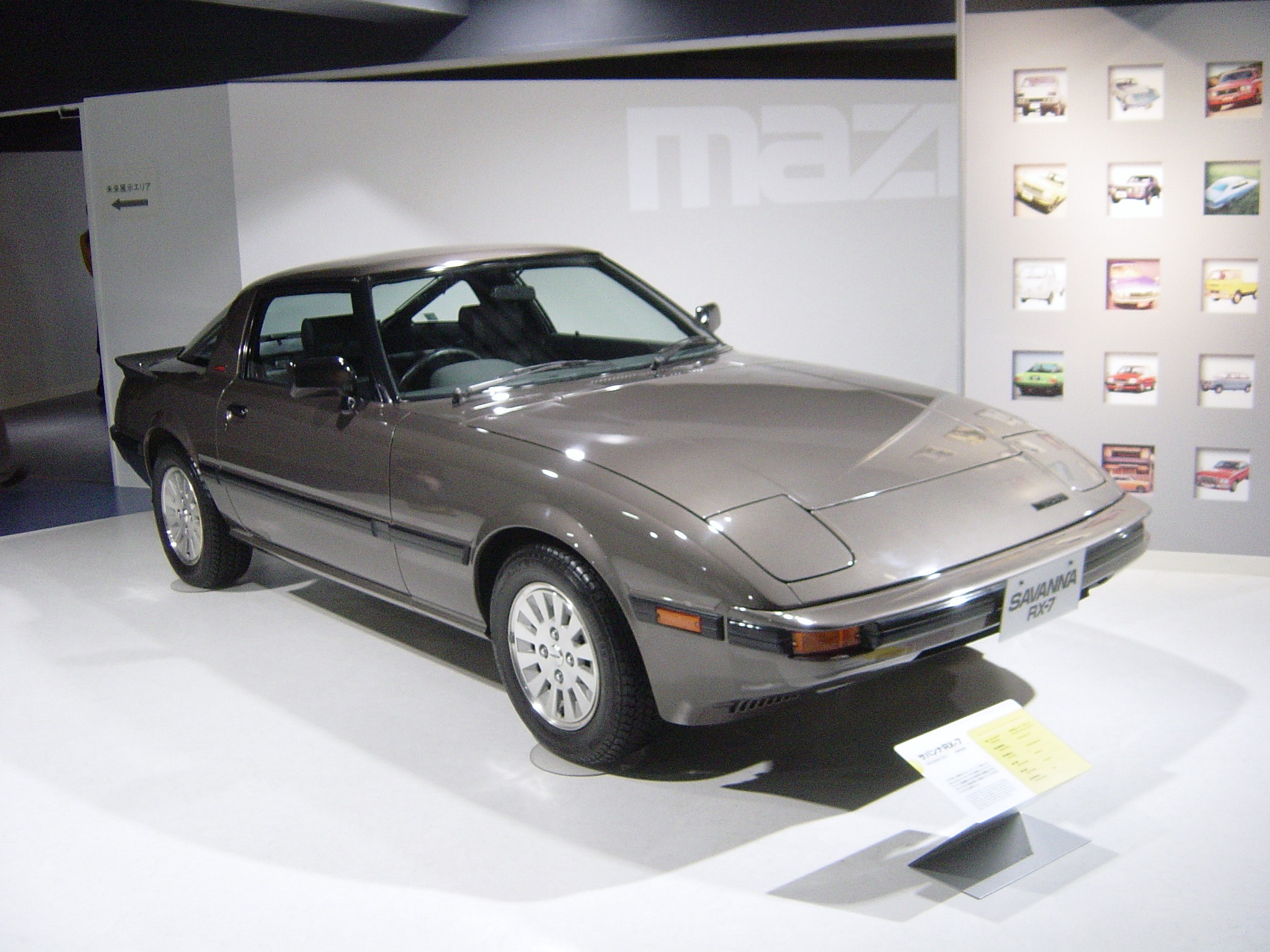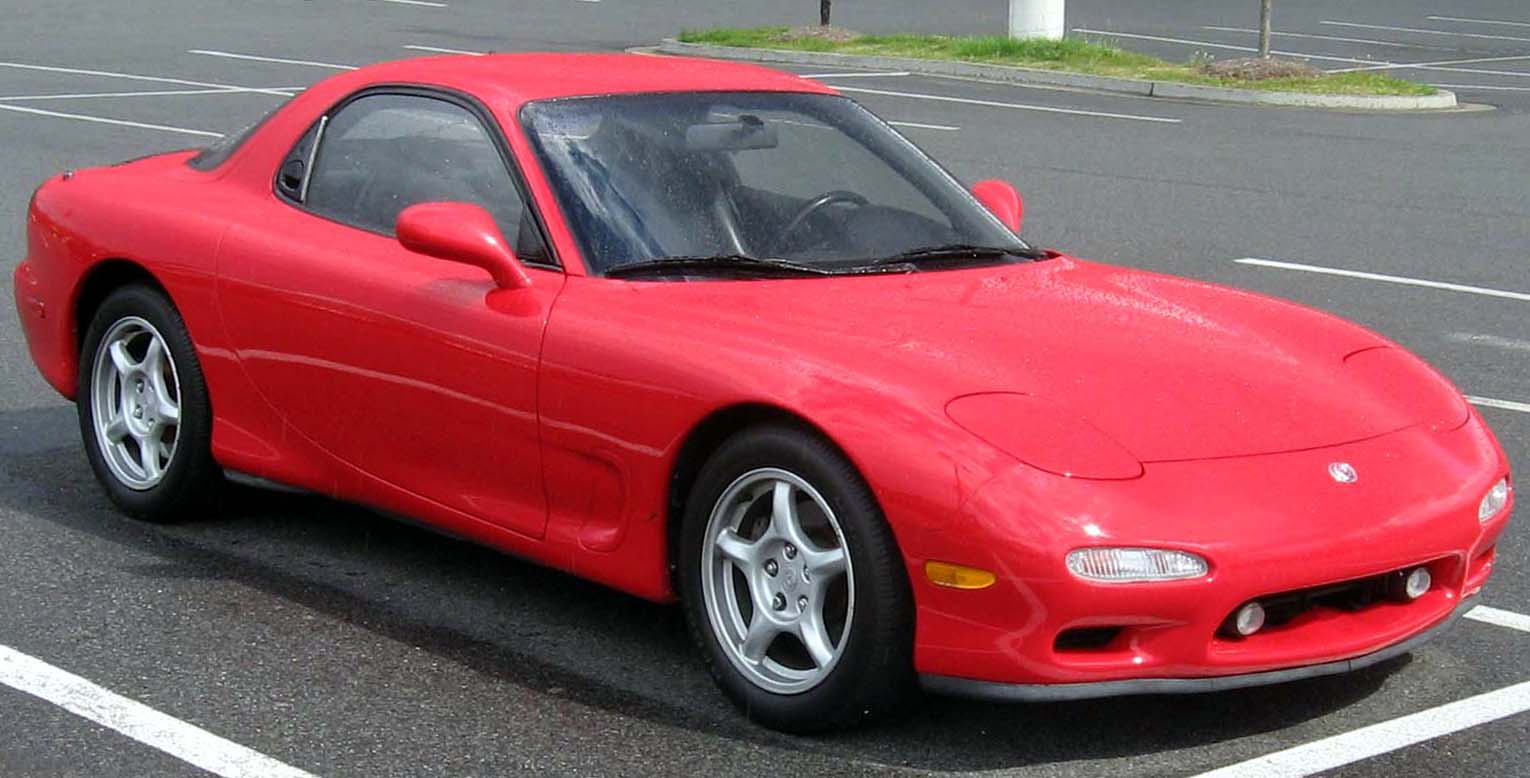

The Mazda RX-7 is a sports car that was produced by the Japanese automaker Mazda from 1978 to 2002. The original RX-7 featured a 1,146 cc (69.9 cu in) twin-rotor Wankel rotary engine and a front-midship, rear-wheel drive layout. The RX-7 replaced the RX-3, with both models sold in Japan as the Mazda Savanna.
The original RX-7 was a sports car with pop-up headlamps. The compact and lightweight Wankel rotary engine is situated slightly behind the front axle, a configuration marketed by Mazda as "front mid-engine". It was offered as a two-seat coupé, with optional "occasional" rear seats in Japan, Australia, the United States, and other parts of the world. The rear seats were initially marketed as a dealer-installed option for the North American markets.
The RX-7 made Car and Driver magazine's Ten Best list five times. 811,634 RX-7s were produced.
The RX-7 has become notable through pop culture such as The Fast and the Furious series, Initial D, Need for Speed, Wangan Midnight,Forza Motorsport and Gran Turismo.

Racing versions of the first-generation RX-7 were entered at the prestigious 24 hours of Le Mans endurance race. The first outing for the car, equipped with a 13B engine, failed by less than one second to qualify in 1979. The next year, a 12A-equipped RX-7 not only qualified, it placed 21st overall. That same car did not finish in 1981, along with two more 13B cars. Those two cars were back for 1982, with one 14th-place finish and another DNF. The RX-7 Le Mans effort was replaced by the 717C prototype for 1983. In 1991, Mazda made racing history becoming the first Japaneseautomobile manufacturer to win the 24 hours of Le Mans. The car was a 4-rotor prototype, the 787B. To this day, Mazda is the only Japanese manufacturer to have won the prestigious 24-hour Le Mans race outright. Mazda is also the only manufacturer to win the 24 hours of Le Mans race using something other than a reciprocating piston engine.
Mazda began racing RX-7s in the IMSA GTU series in 1979. In its first year, RX-7s placed first and second at the 24 Hours of Daytona, and claimed the GTU series championship. The car continued winning, claiming the GTU championship seven years in a row. The RX-7 took the GTO championship ten years in a row from 1982. In addition to this, a GTX version was developed, named the Mazda RX-7 GTP; this was unsuccessful, and the GTPversion of the car was also unsuccessful. The RX-7 has won more IMSA races than any other car model. In the USA SCCA competition RX-7s were raced with great success by Don Kearney in the NE Division and John Finger in the SE Division. Pettit Racing won the GT2 Road Racing Championship in 1998. The car was a 93 Mazda RX-7 street car with only bolt-on accessories. At season end Pettit had 140 points—63 points more than the 2nd place team. This same car finished the Daytona Rolex 24-hour race 4 times.
The RX-7 also fared well at the Spa 24 Hours race. Three Savanna/RX-7s were entered in 1981 by Tom Walkinshaw Racing. After hours of battling with several BMW 530i's and Ford Capris, the RX-7 driven by Pierre Dieudonné and Tom Walkinshaw won the event. Mazda had turned the tables on BMW, who had beaten Mazda's Familia Rotary to the podium eleven years earlier at the same event. TWR's prepared RX-7s also won the British Touring Car Championship in 1980 and 1981, driven by Win Percy.
Canadian/Australian touring car driver Allan Moffat was instrumental in bringing Mazda into the Australian touring car scene which ran to Group C regulations unique to Australia. Over a four-year span beginning in 1981, Moffat took the Mazda RX-7 to victory in the 1983 Australian Touring Car Championship, as well as a trio of Bathurst 1000 podiums, in 1981 (3rd with Derek Bell), 1983 (second with Yoshimi Katayama) and 1984 (third with former motorcycle champion Gregg Hansford). In 1983, Peter McLeod drove his RX-7 to win the 1983 Australian Endurance Championship, while Moffat won the Endurance title in 1982 and 1984. Australia's adoption of international Group A regulations, combined with Mazda's reluctance to homologate a Group A RX-7 (meaning that a base number of 5,000 had to be built, plus another 500 "evolution" models), ended Mazda's active participation in Australian touring car racing at the end of the 1984 season.
The RX-7 even made an appearance in the World Rally Championship. The car finished 11th on its debut at the RAC Rally in Wales in 1981. Group B received much of the focus for the first part of the 1980s, but Mazda did manage to place third at the 1985 Acropolis Rally, and when the Group B was folded, its Group A-based replacement, the 323 4WD claimed the victory atSwedish Rally in both 1987 and 1989.




0 comments:
Post a Comment